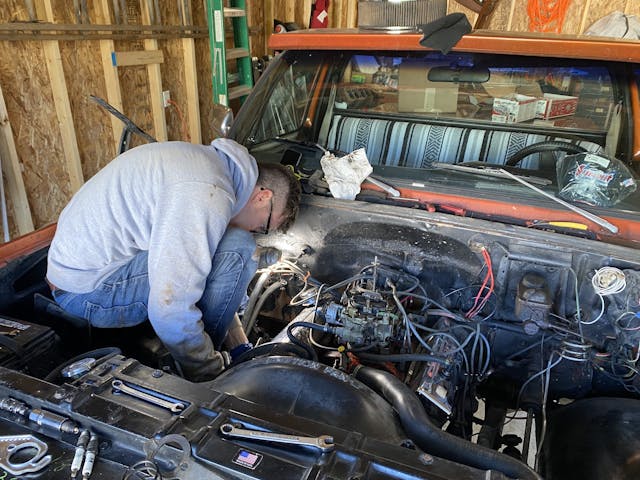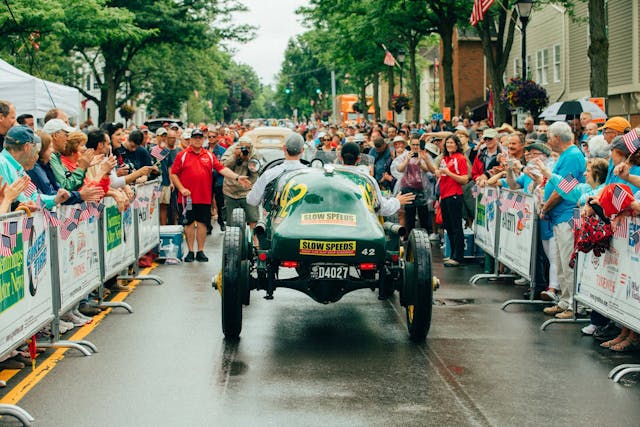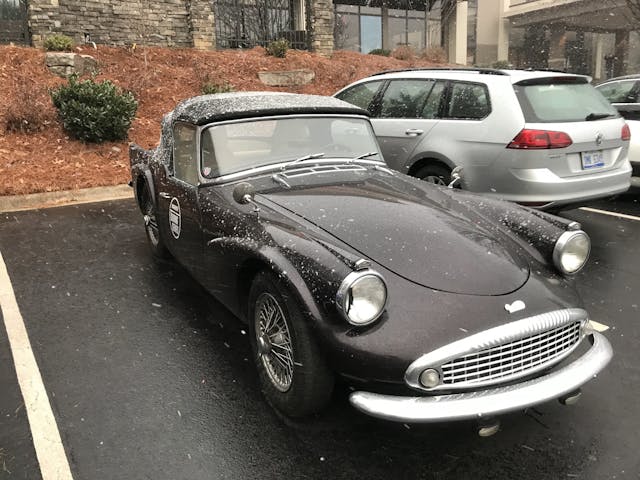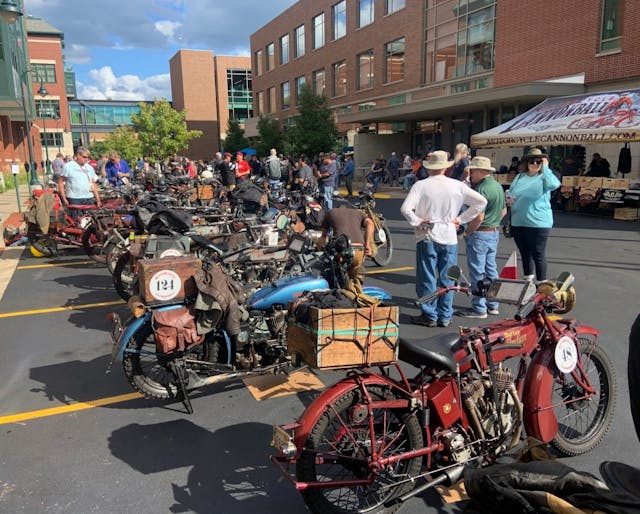5 reasons to adopt orphan project cars
Walk the aisles of your local pick-a-part, or scroll the seemingly endless pages of projects listed for sale on the internet, and you’ll find plenty of cars just waiting for a new home. Decades of market forces have shaped the roster of cars that have survived this long. There’s a certain safety in going with the grain—relatively generous parts supply, aftermarket options, a knowledgable and engaged community—but going the other direction with a particularly rare or unloved model has its own rewards. Here are five reasons to adopt a car from an orphan brand:
Forces you to better understand your car

Parts availability often trends with popularity and production numbers. That means that while those who love Chevrolet Chevelles are spoiled by the ability to procure just about any part or piece they might need to keep their car on the road. Someone with an AMC Javelin is often left to sort out how new and old parts might play nice together.
This doesn’t have to be a bad thing. Mainstream bolt-on kits often make meaningful compromises, and the simplicity of a one-stop shop means the installer doesn’t need to be terribly scrutinizing. In absence of such easy solutions, we might more clearly think through what we are trying to build and not get distracted by low-hanging fruit.
You’ll become a member of the community by necessity

Lived experience is a powerful thing. Usually, the most valuable resource for someone working on a given car is to talk with the people who have been doing it for much longer. Our knowledge and understanding of how our cars work changes over time, as well as changing with the technologies at hand, so not everything should be taken as gospel (look no further than a lot of performance modification books from decades ago) but there is incredible experience to mine from those who have tread the path before us. It’s probably possible to restore a first-generation Mustang without engaging with anyone else, but doing the same with a basket-case Nash? A lot tougher, and a few savvy Nash friends will make your journey a lot richer.
It’s impossible to hide

It’s fun to be known for something, especially if you can pick what it is. “Steve? The guy really into rotary NSUs?” Or “Alex? The Studebaker nut?” Just about any old car will stand out in modern traffic, but an orphan of years gone by is likely to draw even more attention. People just don’t know what they are. The rarer it is on the road, the more likely it is to draw comments and conversation at every fuel-up or parking lot. Not everyone wants to become the center of attention wherever they go, but it can be to have your work in keeping history on the road foster human connections.
Event eligibility

If you like driving your car and attending tours and events, an off-beat or otherwise unusual car can be your ticket into exclusive gatherings that run-of-the-mill cars will not be allowed access. Driving tours and large shows typically have to cap entry, often favoring interesting or unique cars so as to avoid a parade of too-similar vehicles. One example: The Colorado Grand “is open to racing cars and sports cars of distinction built in 1960 or before.” That means Peerless GTs are as welcome as Mercedes-Benz SL Gullwings or Shelby Cobras. One of those is available on a blue-collar budget, while the other two are, well, not.
The barrier to entry is typically lower

Speaking of prices, take a scroll through your favorite classifieds site. It doesn’t take long to suss out that defunct brands generally trade at lower value than those from, say, the Big Three. Your dollar often goes further if your are agnostic as to the grille badge. For the price of an entry-level but popular car, you can sometimes nab the top trim of a more obscure car. While others may spend time and money up-badging or even up-restoring (think of all the Chevrolet 150s that became Bel Airs over the years) it can be satisfying to have piece of history that requires no asterisk. Not to mention the fatter parts budget.
Are there downside that come with choosing the path less traveled? Of course. It’s harder, for one, but the upsides should not be ignored. An oddball car might send you on an adventure that benefits not only you but helps preserve a small part of car culture that would have otherwise faded away.
Now if you’ll excuse me, I have motorcycles to haul and a space in my driveway for a Studebaker pickup to do the grunt work. It’s out there somewhere.



I agree totally with the path orphan cars take you down. Some good, some bad, so far, nothing ugly for me. My wife’s friend inherited a 1967 Lancia Fulvia Sport 1.3 Zagato that sat idle for over 20 years, and offered it to me. Been a car guy my whole life and have owned a variety of cars including a ’58 Impala, ’65 MG, ’68 Camaro and currently an in-progress resto mod on a ’70 fastback, but never heard of this particular Lancia model. I bought it and couldn’t be happier. I knew nothing about the mechanical aspects of this car, some cray engineering. Immediately joined the Lancia Club of America, that led to great support both here in the states and particularly from a gentleman in the UK who owns 2 of the same models and loves to share his knowledge. It also led to a great parts source in Pennsylvania. I went through the mechanical systems, fixed some electrical issues and finally got it running. Yes, some parts are very expensive or unavailable, but taking it slow and not doing a full resto (thanks Hagerty for the full Drivers Club issue on patina – made me rethink my goal with this car!). It’s been to 2 cars and coffee events and one small, but diverse show and so far only 1 person has had any knowledge of the car’s existence and it’s specs. So, pretty cool to educate myself and others. Side note: the previous sole owner of this car passed at the age of 94 after a bout with dementia. My wife’s friend sent me a framed photo of Joe with a note that he wanted to go for a ride. Joe has made it to one cars and coffee and the car show and is proudly displayed on the windshield with a brief summary of info about the car. People love it! Hopefully Joe does too and who knows, it might be my picture in the frame wayyyyy down the road!
Funny coincidence! I bought a 1996 Miata(I know not an orphan car) from a woman who’s husband at 98 who owned the car from new also named Joe had just passed! He had just a month before driven it across the state and back! I think I need a photo of my Joe to go in the wind when I show it now that its been restored. Thats a very good tradition to start.
When I started collecting in the late 60’s and 70’s everybody had the 55-57 Chevy, 32 -34 Ford coupe in our neck of the woods in Idaho, few had the oddball, Reo, Star, Hump, Kaiser, Stude, Int, but few had taken to the oddballs of the past, as they have today. We run down the roads of Florida in our original 1957 Olds 88 convertible and hot rod in our 36 International truck and we get plenty of curious questions and lots of love. The main thing is be happy with your choice and the rest can kick dirt, it’s all about individuality!
I had a 1962 Sunbeam Alpine in 1981 in high school! I have not seen one since. What a crazy car to keep running! I was too young to keep it going and my parents wanted to get me into a more reliable car. It did give me an appreciation for 2 seater sports cars and all things mechanical.